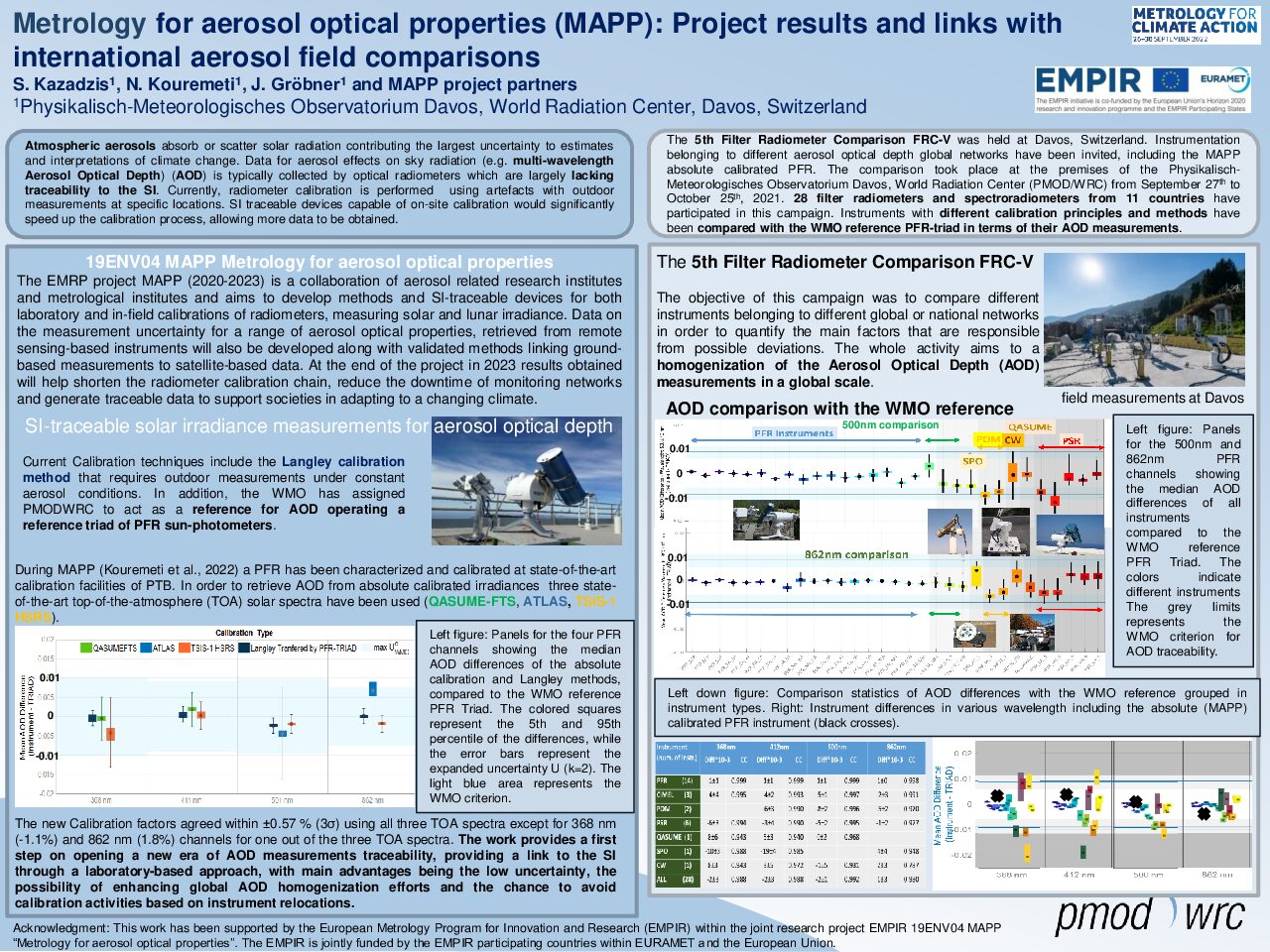↩︎ Back
Monitoring Methane Emissions from Oil and Gas Operations. How Metrology Can Help
by Mrs./Ms. Nkese Mc Shine, Dr. Alexis Valqui, Mr. Nicol Best
ABSTRACT
Metrology of aerosol properties is a European Metrology Programme for Innovation and Research (EMPIR) funded 3-year project, started in June 2020. The overall aim of this project is to enable the SI-traceable measurement of column-integrated aerosol optical properties retrieved from the passive remote sensing of the atmosphere using solar and lunar radiation measurements. Atmospheric aerosols are critical components in terms of impacts on the climate. Their properties have been recognized as Essential Climate Variables by the Global Climate Observing System and according to the Intergovernmental Panel on Climate Change reports, their uncertainty is linked to the one of the estimates and interpretations of the Earth’s changing energy budget. Currently global surface-based networks measuring column integrated aerosol optical properties in Europe (e.g. AERONET, GAW-PFR and SKYNET), operate over hundred stations with complex calibration strategies based on artifact reference devices. The lack of an appropriate metrological framework in the calibration, operation, and data processing of these networks is labor intensive, and uncertain. MAPP aims to provide a link to the SI through a laboratory-based approach, with main advantages being the low uncertainty, the possibility of enhancing global AOD homogenization efforts and the chance to avoid calibration activities based on instrument relocations. Towards this direction AOD measuring instruments have been characterized and calibrated at state-of-the-art calibration facilities of national metrology institutes. The measured SI-traceable solar irradiances together with state-of-the-art top-of-the-atmosphere solar spectra have been used for retrieving AODs with a Precision Filter Radiometer, which was validated against the reference AOD instruments of the World aerosol Optical depth Calibration Center of the World Meteorological Organization (WMO). Calibration factors agreed within ±0.57 % (1 sigma). Application of these results to the AOD retrieval showed AOD differences with the current reference methods/instruments, well within the recommended WMO limits. Results of the MAPP have been used during the, WMO supported, 5th international filter radiometer comparison held in October 2021 in Davos Switzerland. 30 sun-photometers, belonging to various global surface based networks, have participated in this comparison and AOD retrievals based on MAPP results and in traditional Langley based calibrations and other in-situ calibrations, have been compared. Finally, other instrument characterization and calibration activities and developments are going to be presented, together with a comprehensive uncertainty budget for aerosol optical properties, retrieved from remote sensing-based measurements of direct and scattered solar radiation.
VIDEO
POSTER
